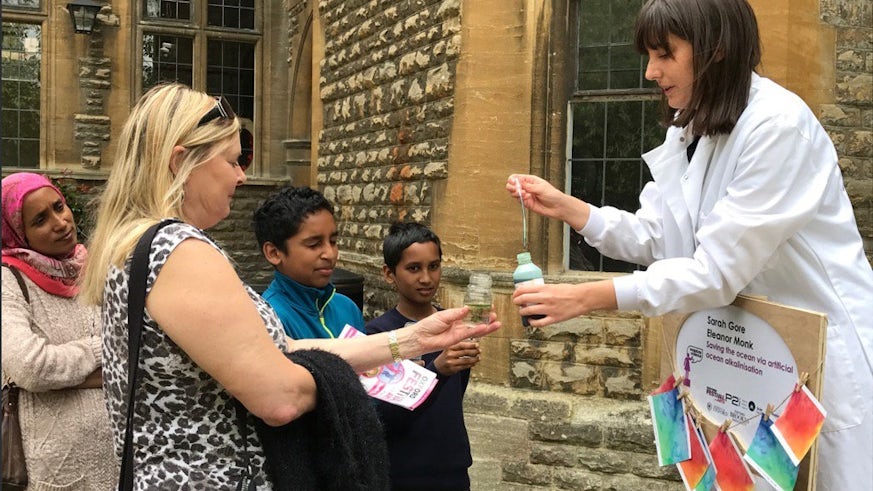Making science accessible through art
11 July 2017

Dr Jenny Pike and PhD student Sarah Gore from Cardiff University’s School of Earth and Environmental Sciences recently took part in a Soapbox Science event which encouraged collaboration between science and the arts.
Each scientist presenting at this year’s Oxford Soapbox Art & Science event teamed up with an artist to collaborate on a scientific topic with, the aim being to inspire a public audience to learn about science in an accessible, fun and unintimidating way.
Jenny presented her topic “Tiny fossils answering big questions: how Antarctic ice evolves in response to changing climate” with Clair Chinnery, a senior lecturer in fine art at Oxford Brookes University.
Jenny’s talk illustrated how the chemistry of fossil diatom (single-celled plankton) shells, particularly the ratio of the different isotopes of oxygen, can be analysed and used to tell us about how the Antarctic ice grew and melted in the past; how glaciers that reach the coastline deliver ice and fresh water from the continent into the oceans, thus impacting on climate and sea level; and how giant icebergs can alter the salinity and ecology of the surface ocean. Clair plans to produce an artwork based on the conversations they have had later in the year.

Sarah collaborated with Eleanor Monk, a fine artist at Oxford Brookes University, on how the oceans could be saved via artificial ocean alkalinisation. She summarised the positive experience of this interdisciplinary collaboration:
“My experience at the Soapbox Art & Science event in Oxford was fantastic. I like to dabble in art myself so the opportunity to be able to bring together two of my favourite things was something I couldn’t pass down.
One of the aims of the Soapbox events is to make difficult scientific concepts more accessible to the public. The fact I got to work with my amazing artist, Eleanor Monk, helped make my research more engaging and interesting.
My talk was on ocean acidification and what we can do to mitigate it. This involved talking about ocean pH change and I used universal indicator, which changes colour at different pH values, to demonstrate this. Eleanor loved this concept and came up with the idea of creating two watercolour images to represent different values of ocean pH. The watercolours were not only beautiful but really helped the audience visualise the recent decline in ocean pH. The watercolours were printed onto postcards that had an ocean acidification fact on the back and so they quite literally brought together science and art.
The use of postcards was Eleanor’s idea and meant that the audience could take a piece of the talk home with them. This was an idea I would never have come up with by myself, which shows just how useful interdisciplinary collaboration is!”